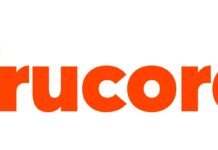ATLANTA, Nov. 7, 2014 /PRNewswire-HISPANIC PR WIRE/ — The Home Depot®, the world’s largest home improvement retailer, today disclosed additional findings related to the recent breach of its payment data systems. The findings are the result of weeks of investigation by The Home Depot, in cooperation with law enforcement and the company’s third-party IT security experts.
Logo – http://photos.prnewswire.com/prnh/20030502/HOMEDEPOTLOGO
Additional Investigation Details Disclosed
In addition to details previously released, the investigation to date has determined the following:
- Criminals used a third-party vendor’s user name and password to enter the perimeter of Home Depot’s network. These stolen credentials alone did not provide direct access to the company’s point-of-sale devices.
- The hackers then acquired elevated rights that allowed them to navigate portions of Home Depot’s network and to deploy unique, custom-built malware on its self-checkout systems in the U.S. and Canada.
- In addition to the previously disclosed payment card data, separate files containing approximately 53 million email addresses were also taken during the breach. These files did not contain passwords, payment card information or other sensitive personal information. The company is notifying affected customers in the U.S. and Canada. Customers should be on guard against phishing scams, which are designed to trick customers into providing personal information in response to phony emails. Information about how to avoid phishing and other email scams is available by typing https://www.onguardonline.gov/articles/0003-phishing into your web browser.
As previously disclosed, the malware used in the attack had not been seen in any prior attacks and was designed to evade detection by antivirus software, according to Home Depot’s security partners. As the company announced on September 18, the hackers’ method of entry has been closed off and the malware has been eliminated from the company’s systems.
The Home Depot’s investigation, cooperation with law enforcement and efforts to further enhance its security measures are ongoing. The company does not anticipate further updates on the breach outside of its quarterly financial disclosures.
The Home Depot continues to offer free identity protection services, including credit monitoring, to any customer who used a payment card at a Home Depot store in 2014, from April on. Customers who wish to take advantage of these services can learn more at www.homedepot.com or by calling 1-800-HOMEDEPOT (800-466-3337). Customers in Canada can call 800-668-2266.
Cyber Security Enhancements
Enhanced Encryption
The company has implemented enhanced encryption of payment data in all U.S. stores. The new security protection locks down payment card data, taking raw payment card information and scrambling it to make it unreadable and virtually useless to hackers. Home Depot’s encryption technology, provided by Voltage Security, Inc., has been tested and validated by two independent IT security firms.
Though initially launched in January 2014 as part of a strategic plan to expand security beyond those protections already in place, implementation of the project was accelerated after the breach and completed in all U.S. stores on September 13, 2014. The rollout to Canadian stores will be completed by early 2015.
EMV Chip-and-PIN Technology
The company is rolling out EMV chip-and-PIN technology, which adds extra layers of payment card protection for customers. Chip-and-PIN technology was deployed to Canadian stores in 2011. Launched as a project for U.S. stores in January 2013, the project will be completed ahead of the payment industry’s deadline.
Prior Guidance Confirmed
The Home Depot will release its third quarter results on Tuesday, November 18. The company today confirmed its previous fiscal 2014 sales growth guidance of approximately 4.8 percent and its fiscal 2014 diluted earnings per share growth guidance of $4.54, an increase of approximately 21 percent, which includes estimates for the cost to investigate the data breach, provide credit monitoring services to customers, increase call center staffing, and pay legal and professional services, all of which are expensed as incurred.
The company’s fiscal 2014 diluted earning-per-share guidance does not include an accrual for other yet-to-be determined estimable and probable losses related to the breach. At this time, other than the breach-related costs contained in the company’s fiscal 2014 diluted earnings-per-share guidance above, the company is not able to estimate the costs, or a range of costs, related to the breach. Costs related to the breach may include liabilities to payment card networks for reimbursements of payment card fraud and card reissuance costs; liabilities related to the company’s private label credit card fraud and card reissuance; liabilities from current and future civil litigation, governmental investigations and enforcement proceedings; future expenses for legal, investigative and consulting fees; and incremental expenses and capital investments for remediation activities. These costs may have a material adverse effect on The Home Depot’s financial results in the fourth quarter of fiscal 2014 and/or future periods.
The Home Depot is the world’s largest home improvement specialty retailer, with 2,266 retail stores in all 50 states, the District of Columbia, Puerto Rico, U.S. Virgin Islands, Guam, 10 Canadian provinces and Mexico. In fiscal 2013, The Home Depot had sales of $78.8 billion and earnings of $5.4 billion. The company employs more than 300,000 associates. The Home Depot’s stock is traded on the New York Stock Exchange (NYSE: HD) and is included in the Dow Jones industrial average and Standard & Poor’s 500 index.
Certain statements contained in this release constitute “forward-looking statements” as defined in the Private Securities Litigation Reform Act of 1995. These forward-looking statements are based on our current assumptions and expectations (which may change) and may relate to, among other things, (a) the impact of the breach on our results of operations, including (i) costs related to the breach (including any costs not currently reflected in our guidance), the related ongoing investigation and resulting liabilities, (ii) the outcome of our ongoing investigation, including our potential discovery of new information related to the breach, such as the discovery that additional information has been stolen, and our customers’ and other stakeholders’ reaction to that new information, (iii) our ability to recover any proceeds under our insurance policies, (iv) the uncertainty regarding the outcome of any current or future civil litigation, governmental investigations and enforcement proceedings, and their impact on our financial performance and operations, (v) loss of customer confidence in our ability to protect their information and the adverse impact this loss of confidence may have on sales, and (vi) our ability to effectively or timely implement adequate payment security enhancements and other remediation efforts and our potential inability to prevent future attacks; (b) the demand for our products, services and credit offerings; (c) net sales growth; (d) comparable store sales; (e) state of the credit markets; (f) continuation of share repurchase programs at previously announced levels; (g) net earnings performance; (h) earnings per share; (i) guidance for fiscal 2014 and beyond; and (j) financial outlook. Forward-looking statements are based on currently available information and our current assumptions, expectations and projections about future events. You should not rely on our forward-looking statements. These statements are not guarantees of future performance and are subject to future events, risks and uncertainties – many of which are beyond our control or are currently unknown to us – as well as potentially inaccurate assumptions that could cause actual results to differ materially from our expectations and projections. These risks and uncertainties include but are not limited to those described in Item 1A, “Risk Factors,” and elsewhere in our Annual Report on Form 10-K for our fiscal year ended February 2, 2014, in our subsequent Quarterly Reports on Form 10-Q and in any other materials or reports we file with the Securities and Exchange Commission (the “SEC”).
Forward-looking statements speak only as of the date they are made, and we do not undertake to update these statements other than as required by law. You are advised, however, to review any further disclosures we make on related subjects in our periodic filings with the SEC.






